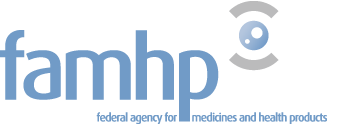The European Medicines Agency (EMA) published the tenth ESVAC report (European Surveillance of Veterinary Antimicrobial Consumption) about the sale of antibacterial agents for veterinary use in 2018. Further efforts remain necessary, in Belgium as well.
On October 21, 2020, the tenth ESVAC report was published, a representation of the sales numbers of antibacterial agents for veterinary use in 2018. The results of 31 EU/EEA member states are laid out.
Decreasing European trend
The sales of antibiotics is expressed in mg/PCU and takes into account the number of living animals and how many kilograms of meat is produced. The total use for all 31 countries in 2018 was 103.2 mg/PCU. This is a reduction of 3.8 mg/PCU compared to the previous year.
On average, sales in the EU of antibacterial agents for veterinary use decreased by 34.6 % between 2011 and 2018 (for the 25 countries that provided sales data for all years between 2011 and 2018). Eighteen countries saw a reduction of more than 5 %, ranging from -6.2 % to -58.2 %. Not all countries, however, experienced a reduction. Five countries experienced an increase of more than 5 %.
The sales of critical substances, which are antibacterial substances that are important for public health, amounted to 0.2 mg/PCU, 2.5 mg/PCU and 3.4 mg/PCU, respectively, for third and fourth generation cephalosporins, fluoroquinolones and polymyxins.
On the EMA website an interactive database(link is external) is available allowing users to access a summary of the specific ESVAC data they are interested in, including data for a specific country or sales of a particular antimicrobial class. Users can use the database to customise charts, maps and graphs.
Belgium
In Belgium, a reduction of 36 % compared to 2011 was achieved with 113.1 mg/PCU for 2018 (reduction of 14 % compared to 2017). This means that antibiotic consumption in animals remains relatively high, compared with the European median of 57 mg/PCU, and also compared with neighbouring countries with a similar animal husbandry structure such as France (64.2 mg/PCU), the Netherlands (57.5 mg/PCU) or Germany (88.4 mg/PCU). Belgium will therefore have to continue to make sustained efforts in order to further reduce antibiotic use in veterinary medicine.

In Belgium, sales of third and fourth generation cephalosporins in 2018 (0.08 mg/PCU) decreased by 20% from 2017. For fluoroquinolones (0.20 mg/PCU) a decrease of 10% is observed for 2018 compared to the previous year.
The use of polymyxins (mainly colistin) decreased slightly by 5% (2.03 mg/PCU in 2018) and remains linked to the use of ZnO that became available in 2013 as an alternative for the treatment of diarrhoea in weaned piglets. Compared with 2012, (the year before ZnO became available) the use of colistin decreased substantially by 65 %.
For the macrolide group, in 2018 (7.12 mg/PCU) a slight decrease can be noted compared to 2010 (8.3 mg/PCU).
Further information
10th ESVAC report on the EMA website
News on EMA-website

